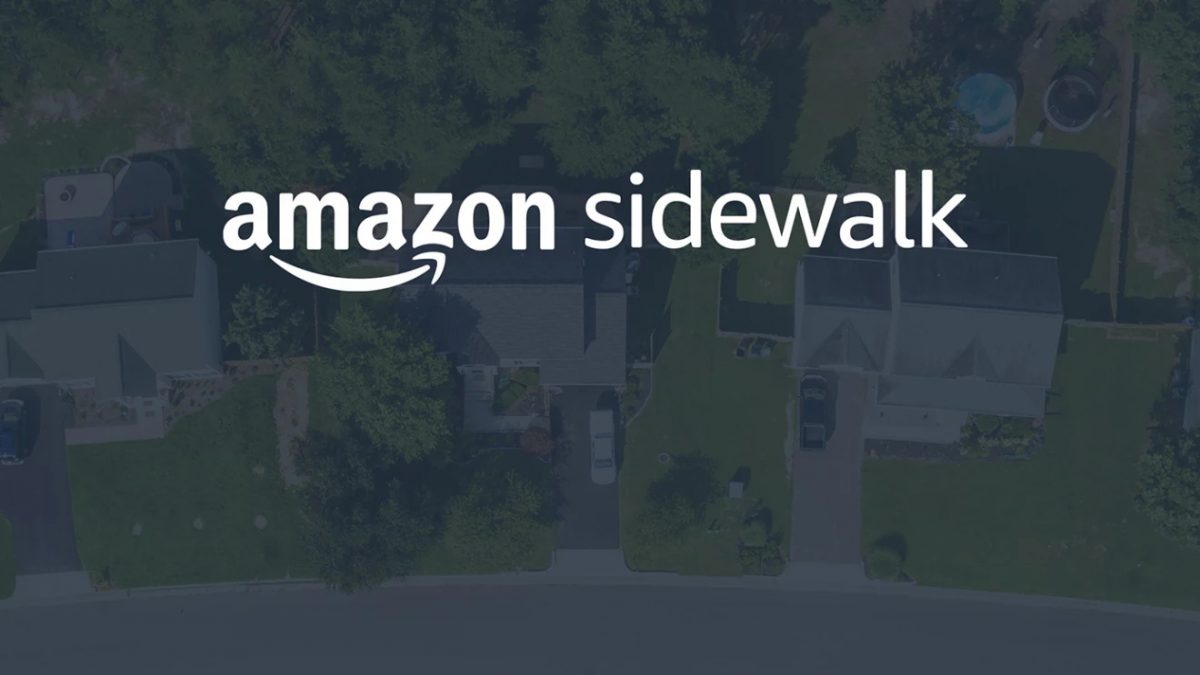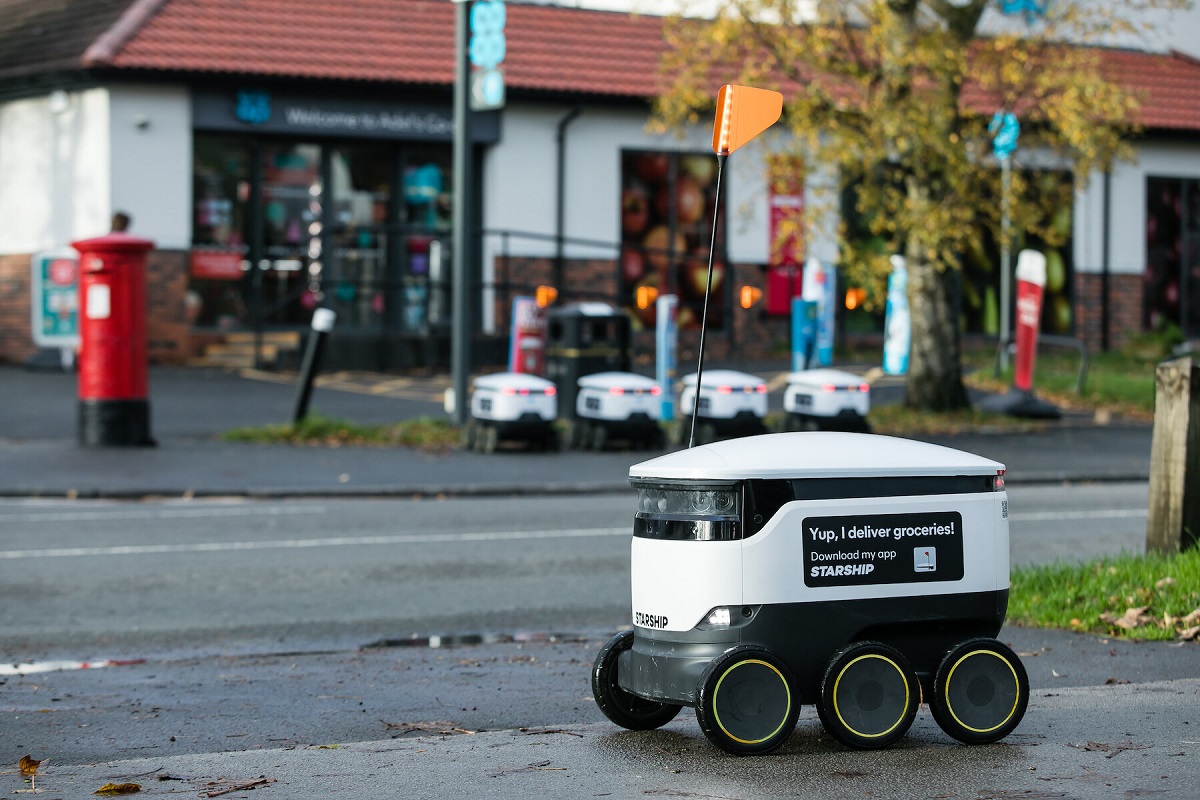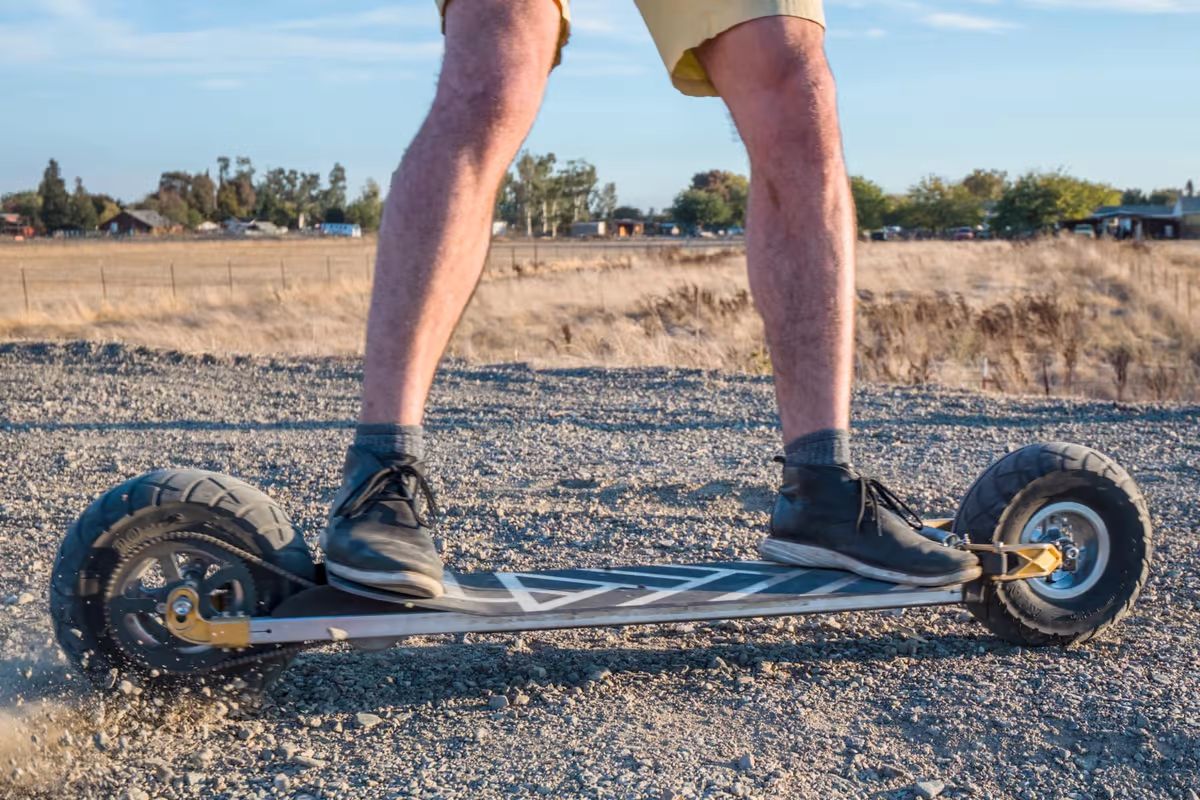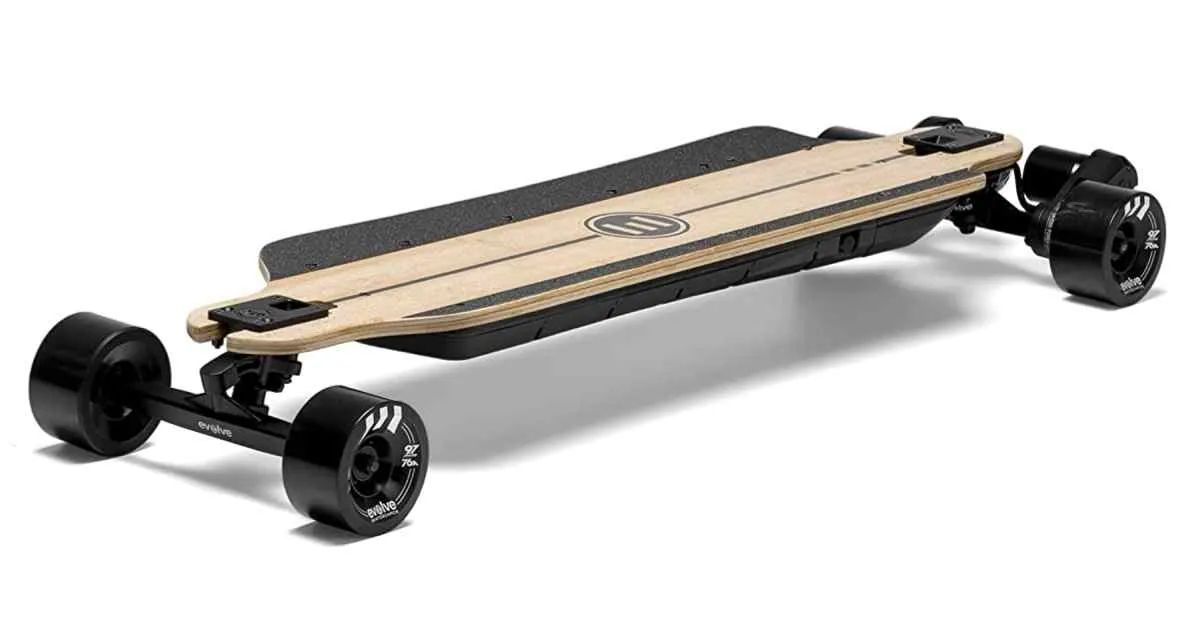Amazon Sidewalk is a new wireless protocol that will extend the range of your devices. This community-based network is Amazon’s answer to connectivity problems associated with smaller devices outside the home. With Sidewalk, you’ll be able to control devices that out of reach of your internet connection. You’ll also be able to receive data from devices from afar or locate misplaced objects and pets.
In this article, we’ll take a look at how this technology works and the many conveniences that it promises to bring.


Amazon smart products are becoming increasingly common among American households. But for most of these products, their usefulness only extends to as far as your Wi-Fi can go. This is the major issue that Amazon has tried to solve since 2019, and they finally have an answer in Sidewalk. But what exactly is this upgrade all about? And will it actually achieve its intended effect? Let’s find out.
What is Amazon Sidewalk?


Sidewalk is a low-bandwidth, long-distance network protocol designed to augment connectivity problems in devices that are not within the range of the internet. It’s Amazon’s response to the connectivity problem for small Internet of Things (IoT) devices. The objective of the technology is to extend the range of devices through a low-bandwidth solution. Normally, the connectivity of your smart devices is limited to the reach of your Wi-Fi. Once you’ve breached that line of Wi-Fi availability, these devices immediately become useless. But with Sidewalk, the connectivity of your devices is extended to a much longer range.
The devices that often suffer from connectivity problems are also the devices that exist on the edges of your Wi-Fi network. Examples of devices include sensors, security cameras, smart lights, among other things.
As a result of poor connectivity, most people experience difficulties in controlling and utilizing these devices. Even worse, these devices become starved of software and security updates that are required to make them function properly. Then there are other devices, such as location trackers, that also suffer from a limited range. Most of these products rely on Bluetooth, which is only a short-distance protocol.
What Are the Applications for the Technology?


Amazon has a number of practical uses in mind for Sidewalk. First off, it will allow you to control devices that are not within reach of your internet connection. These are usually the devices that are within the periphery of your home. Examples include smart lights, garage openers, security sensors, and whatnot. With Sidewalk, you should be able to control these devices with ease and even at a distance from your home.
The technology will also help you locate valuables or even pets with the help of a GPS tracker. A GPS tracker is a small device that you put in with your wallet, bag, or dog collar. You can extend your range of search by up to half a mile when using Sidewalk in combination with a tracker. Another thing you can do is to get car alerts regardless of where you park your car. You might even be able to get device status updates even when you’re not home.
Another lesser-known but very interesting benefit of having Sidewalk in place is that it can help improve general connectivity. It practically shares the internet signals with devices receiving less of it. This helps increase the bubble of signal to a larger area. With so many devices sharing network signals, a true community-based network is created.
How Does Amazon Sidewalk Work?


The mechanism behind Amazon Sidewalk is both novel and commonplace at the same time. The technology takes after mesh network protocols like Zigbee and Z-Wave. First, the program takes a part of your in-home Wi-Fi network. It converts these signals into Bluetooth Low Energy (BLE) signals, also known as 900 MHz radio signals. These signals are less powerful than Wi-Fi and aren’t able to carry a lot of data.
However, BLEs have a much longer range than standard Wi-Fi. In fact, Amazon has reported its range to reach anywhere between a quarter of a mile and half a mile. A half-mile isn’t actually that far, but it’s still a long way farther than what most Bluetooth and Wi-Fi systems can reach.
These signals allow different devices to communicate within a single network. There are actually two categories of devices that can participate in the network. There are larger devices called bridges and smaller devices called Sidewalk-enabled devices. Sidewalk-enabled devices connect to the network via bridges — devices that take on the Wi-Fi signals. The network is formed when pillars connect with each other, and then smaller devices join in on the network.
These two types of devices plus the signals form a low-bandwidth network of devices that can communicate with each other. The Sidewalk network also works independently from standard Wi-Fi protocols. This means that the devices will stay connected even without an internet connection.
What Are Some Examples of How it Works?


In order to demonstrate how the technology works at the level of individual devices, let’s use an example. Let’s say that your doorbell is just out of reach of your internet connection. But your neighbor’s front door is much slower, let’s say 20 feet away. The bridge from your neighbor’s house will detect this. It will then automatically share signals with your doorbell.
Another way this works is when you’re trying to locate an item with a Tile tracker. The nearest bridge will detect the tracker and send you the approximate location. The coverage of the search can extend even further than the half-mile reckoning point, for as long there are Amazon bridges nearby. The same goes for a missing pet wearing a Fetch or Tile tracker.
It doesn’t require any special modems or cables. Every Sidewalk bridge will connect to other bridges. On a similar note, every Sidewalk-enabled device can connect to the nearest bridge. All of this takes place without any special modems or cables. It’s clear from this demonstration that Amazon intended for Sidewalk to serve more as a broad network to be shared by neighborhoods. If you’re already convinced at this point but haven’t tried out Amazon products for yourself, you can check out this guide on how to set up your own Alexa Smart Home.
What Devices Will Feature Sidewalk?
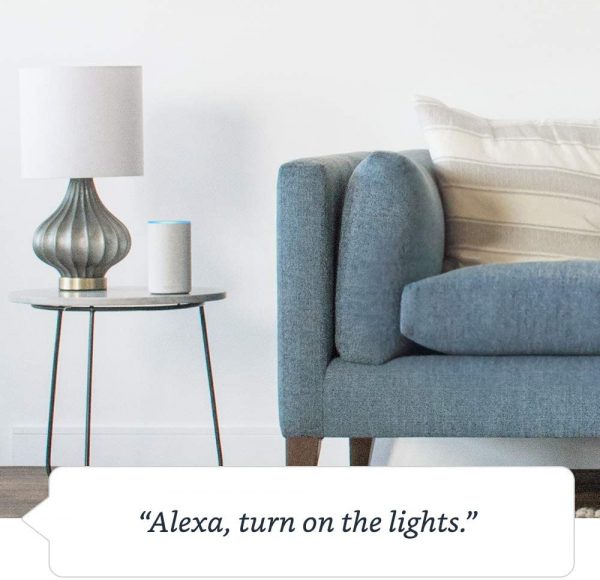

Amazon announced that they intend for Amazon Echo and Ring devices to serve as bridges. Amazon intended for devices they made after 2018 to serve as bridges, but even older versions of Amazon Echo might work. These include several editions of the Amazon Echo (3rd and 4th Gen), Echo Dot (3rd and 4th Gen), and Echo Show (series 5,8, and 10). Also included are older versions of Amazon Echo Spot, Studio, Input, and Flex.
As for the Ring devices, specific models such as the Ring Floodlight Cam, Spotlight Cam Wired, and Spotlight Cam Mount can serve as bridges. The upcoming Ring Floodlight Cam Wired Pro will also support Sidewalk and can also act as a bridge for your smaller devices.
Amazon also plans to work with third-party software to expand the functionality of Sidewalk. They announced a partnership with Tile, a location tracking service. If this plan comes to fruition, Tile users should be able to locate misplaced or stolen valuables with the help of Sidewalk. Amazon has also indicated its intention to release a dedicated unit to act as a bridge, free of charge. But for the very first rollout, they are sticking with using existing Echo and Ring devices.
Read Also: Amazon Echo Spot: Everything You Need to Know
Is Amazon Sidewalk Safe?


Sidewalk is an open network, which means all devices within range can connect to it. Amazon also intended for the software updates to occur automatically. This means that all Amazon devices within range will become part of the network whether we like it or not. This community-centered approach of course brings up some security issues. Naturally, people wonder if their network will become vulnerable because of this or if other people can steal their Wi-Fi data. In response to these security concerns, Amazon has taken a series of steps to ensure that customer privacy will be protected.
First off, the system makes use of three layers of encryption. These encryption standards also apply to third-party software that intends to use the system. While they haven’t explained this in detail, we just take it to mean that the program is super secure. When it comes to the bridge, smaller devices will still be able to connect to your network. However, you won’t be able to see them. At the same time, the devices connected to your network won’t be able to see any data related to your bridge. The encryption hides all identities and data of all parties involved. And if you’re wondering if your neighbors will be able to mooch on your Wi-Fi, the answer is no.
The same level of protection applies to the Community Finding feature. This lets you locate devices or pets from outside your home. The Community Finding feature works a lot like other pet trackers. It shows you the approximate location of your pet, but not the details of the bridge or owners of the houses nearby.
How Much Data Will Amazon Sidewalk Consume?


Sidewalk is a low-powered, low-bandwidth network. That means it can transmit signals from devices, but it’s really strong enough to handle video streaming or other high-bandwidth transactions. It also means that the program should have minimal or negligible bandwidth consumption. In other words, it only takes a very small portion of your Wi-Fi signals.
According to them, Sidewalk will use a maximum of 500MB of data/month and 80Kbps of bandwidth at a given moment. Of course, the scenario will be a bit different if you’re using a low-bandwidth service. But if you can stream HD videos or games on your computer, then there shouldn’t be any problem.
How Can I Opt Out of Sidewalk?


Amazon has always kept its ground about just how secure Sidewalk is. But then again, it hasn’t rolled out yet so we have no way to verify that claim just now. There are also doubts among the public about Amazon’s ability to protect user privacy. For some, the seeds of doubt were planted along with the revelation that Alexa listens in on conversations. But if you’ve decided to opt out of the service, you can. Here are the steps:
- Open the Alexa app on your Android or iOS device.
- Click on Settings > Account Settings > Amazon Sidewalk.
- Move the slider on the Amazon Sidewalk toolbar to disable the feature.
You can also turn off the Community Finding feature. However, we must note that turning off this feature will keep Sidewalk. In any case, here’s how to turn off Community Finding:
- Open the Alexa app on your Android or iOS device.
- Click on Settings > Account Settings > Amazon Sidewalk.
- Toggle off the Community Finding toolbar to deactivate location sharing.
Final Thoughts on Amazon Sidewalk: An Alternative Network Solution


Amazon has been building up hype for the update for a long time now. However, they’ve never been able to fully be ready for the rollout until now. After more than two years since Amazon first announced the project, Sidewalk will finally roll out by June 2021 in the US. If you happen to live there, you can expect an email from Amazon explaining the program soon enough.
Understandably, not everyone will be thrilled about this new project. There are people with ongoing concerns about privacy, while others simply aren’t comfortable with sharing their internet resources with neighbors. We won’t really know if these privacy concerns have merit, but we’ll soon find out how this works in practice. But before you dismiss the program as a security threat, try to keep an open mind and try it out. If you enjoyed this article, you might also enjoy this article about setting up your own home automation system.







